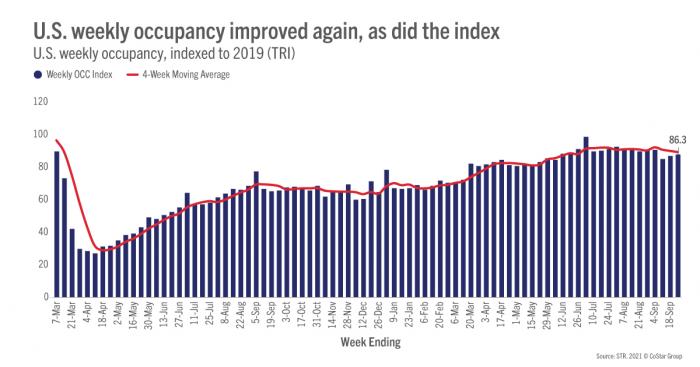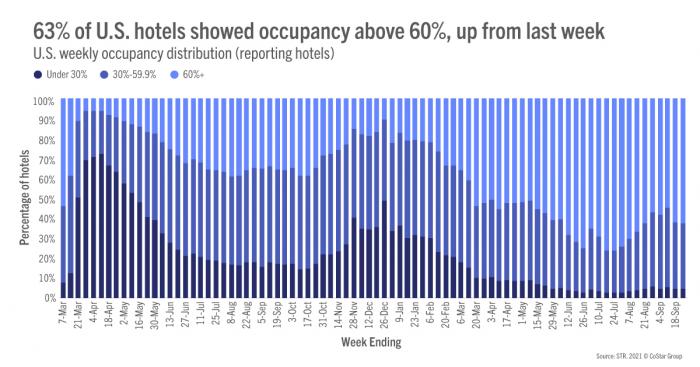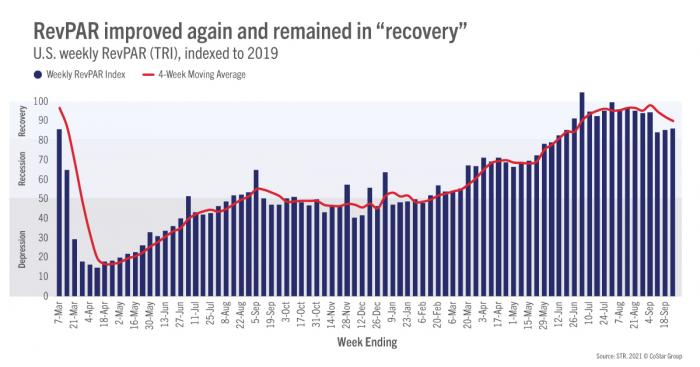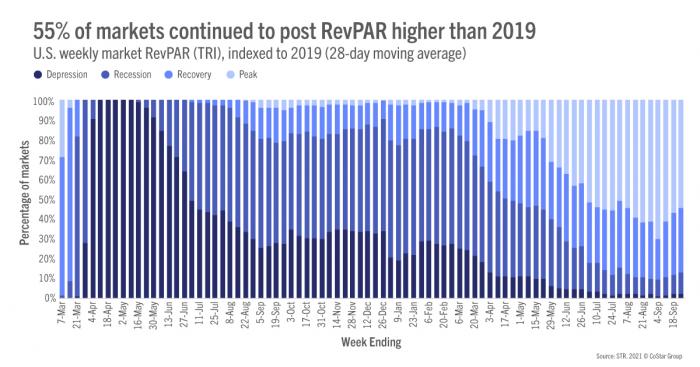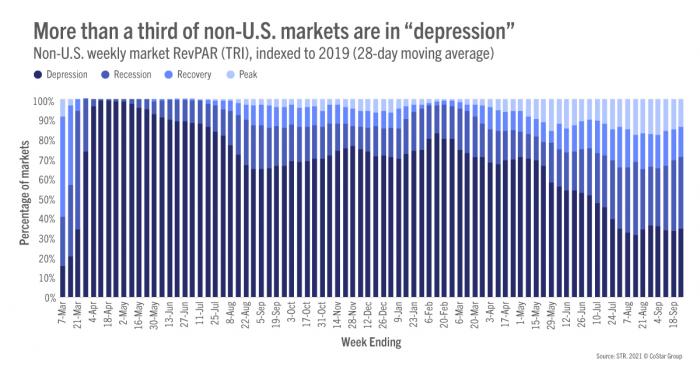Previous MRM versions: 11 September | 18 September
Week ending 25 September
U.S. demand and occupancy continued to surprise and delight as both measures rose again during 19-25 September 2021, which was the second consecutive week of such gains. Most industry observers expected a moderate to sharp performance decrease in the weeks after Labor Day given the seasonal return to in-person schooling as well as the increase in COVID hospitalizations and a low volume of business travel.
Occupancy for the week advanced to 63.2%, up 0.3 points week on week and 89% of the comparable level from 2019. During the summer, from the week of Memorial Day to the week of Labor Day, occupancy averaged 66.1% and 91% of 2019’s levels. For this last week, occupancy growth was led by weekend demand gains, which accounted for 81% of the week’s total demand growth. Weekday occupancy also rose but only slightly. More than 63% of all reporting hotels saw weekly occupancy above 60% during the week, which was a bit more than in the previous week. On a total-room-inventory basis (TRI), which accounts for temporarily closed hotels, weekly occupancy was 60.9%. A little more than 50,000 rooms remain temporarily closed, also up slightly from the previous week.
